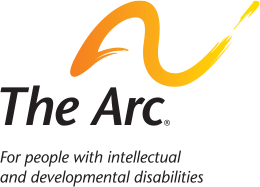The Arc Responds to Finalized CRDC Questions for 2025-2026/ 2027-2028 School Years
September 8, 2025
Ross Santy
Chief Data Officer, Office of Planning, Evaluation and Policy Development
U.S. Department of Education
400 Maryland Ave. SW, LBJ, Room 4C210
Washington, DC 20202–1200
RE: Mandatory Civil Rights Data Collection (Docket No. ED-2024-SCC-0128)
Dear Mr. Santy:
On behalf of The Arc of the United States, the largest national community-based organization advocating for and serving people with intellectual and developmental disabilities and their families, I submit these comments regarding the Department of Education’s (ED) proposed information collection for the mandatory Civil Rights Data Collection (CRDC) for school years 2025-26 and 2027-28.
The Arc offers the following recommendations, consistent with formal comments made regarding the CRDC in December 2024—adapted from the comments submitted by the co-chairs of the Consortium for Constituents with Disabilities Education Task Force.
I. Proceed to Include all Proposed Revised and New Questions
Rationale: The Arc supports the addition of revised and new questions that will help inform and improve transparency in school data with regard to the following:
- Instruction Type – which includes:
- retiring a question about remote instruction during COVID-19 and;
- revising two questions regarding 1) remote instruction setting and 2) remote instruction received by students/percentage.
- Non-LEA Facilities -which includes new questions to provide much-needed data on:
- the number of preschool students enrolled in the LEA and who were being served in non-LEA facilities only (disaggregated by race, sex [male, female], disability IDEA, disability-Section 504 only, EL) (LEA-level);
- the number of K-12 students enrolled in the LEA and who were being served in non-LEA facilities only (disaggregated by race, sex [male, female], disability-IDEA, disability-Section 504 only, EL) (LEA-level);
- the number of K-12 students enrolled in the LEA and who were being served in non-LEA facilities only, subjected to mechanical restraint (disaggregated by race, sex [male, female, nonbinary], disability-IDEA, disability-Section 504 only, EL) (LEA-level);
- the number of K-12 students enrolled in the LEA and who were being served in non-LEA facilities only, subjected to physical restraint (disaggregated by race, sex [male, female], disability-IDEA, disability-Section 504 only, EL);
- the number of K-12 students enrolled in the LEA and who were being served in non-LEA facilities only, subjected to seclusion (disaggregated by race, sex [male, female], disability-IDEA, disability-Section 504 only) (LEA-level).
- Informal Removal – which includes:
- the addition of a definition of Informal Removal;
- the addition of a question regarding Informal Removal in preschool and K-12 classrooms for students with disabilities, disaggregated by race, sex [male, female,], disability-Section 504 only, English Learner (EL); the addition of a question regarding;
- the addition of a question regarding Informal Removal in preschool and K-12 classrooms for students without disabilities, disaggregated by race, sex, and English Learner (EL);
- the proposal to add NEW questions for preschool and K-12, respectively, that would require schools to report the number of instances of informal removals for students with/without disabilities, disaggregated;
- the addition of a new definition for Informal Removal.
- Threat Assessments – which includes:
- the addition of definition of Threat Assessment;
- the addition of a question regarding the number of preschool students who were referred for a threat assessment (disaggregated by race, sex [male, female], disability-IDEA, disability-Section 504 only, EL);
- the addition of a question regarding the number of K-12 students with disabilities who were referred for a threat assessment (disaggregated by race, sex [male, female], disability-Section 504 only, EL);
- the addition of question regarding the number of K-12 students without disabilities who were referred for a threat assessment (disaggregated by race, sex [male, female], EL);
- the addition of a question indicating whether a school has a threat assessment team or any other formal group of persons to identify students who may pose a threat of targeted violence in schools.
While The Arc generally supports the additions related to Threat Assessments, we do so with some caution. Experience shows that these systems, protocols, and teams often disproportionately impact students with disabilities. When this happens, students’ educational opportunities can be severely disrupted due to the frequent use of exclusionary and harmful disciplinary measures—such as suspension, expulsion, restraint, seclusion, law enforcement referrals, and informal removals from school. Therefore, we believe that collecting more detailed, school-level data on these practices is essential. It will enable us to better support students, families, and schools, ensuring that the rights and opportunities of children with disabilities are upheld rather than overlooked or violated.
As an organization committed to the fair, appropriate, and inclusive treatment of all children in all settings, including students with intellectual and developmental disabilities, we continue to press for changes to policy and practice and for the critical data that make systemic change possible. If you have any questions or need additional information, please contact Robyn Linscott, Director of Education and Family Policy, The Arc of the United States at linscott@thearc.org.
Sincerely,
Robyn Linscott







